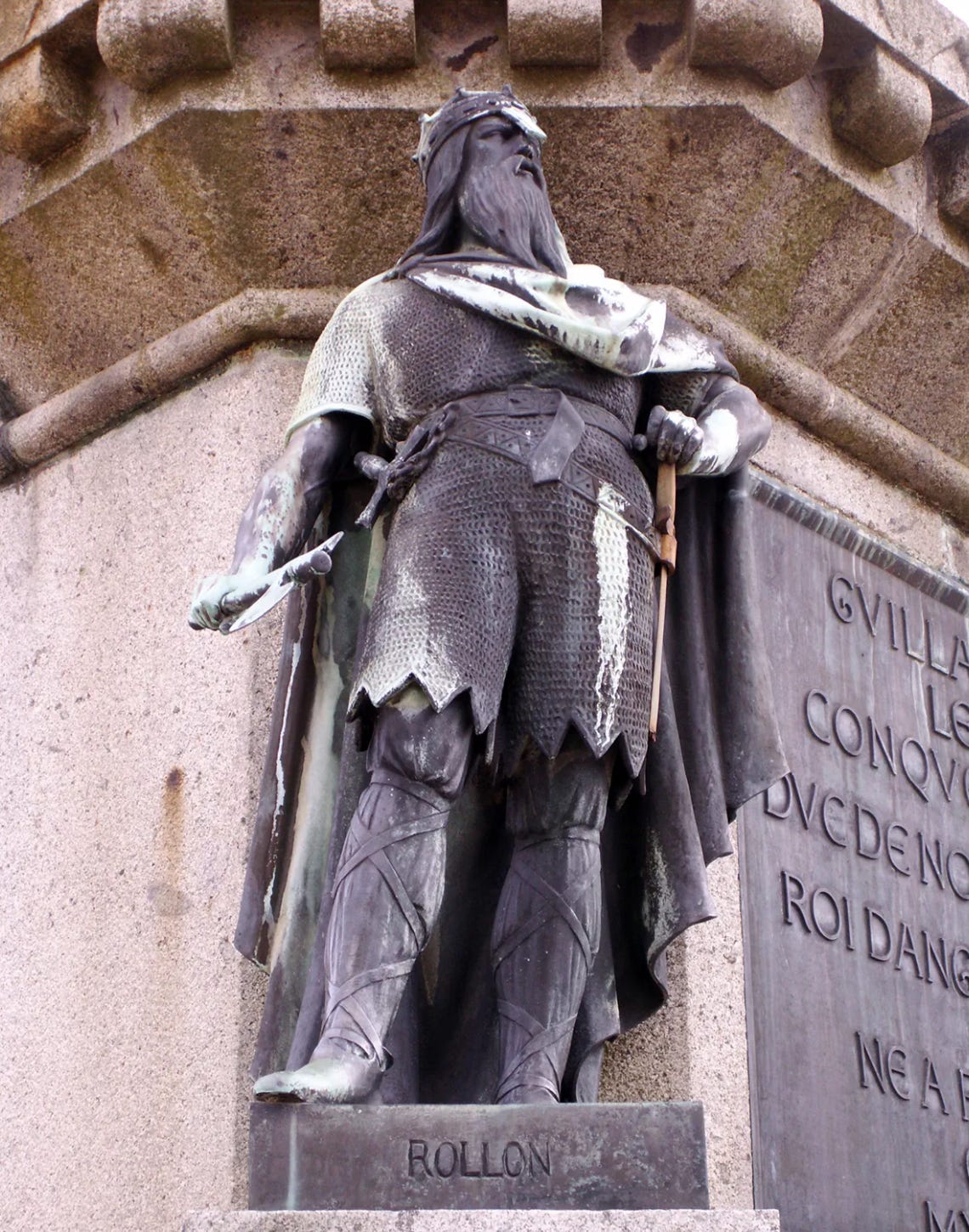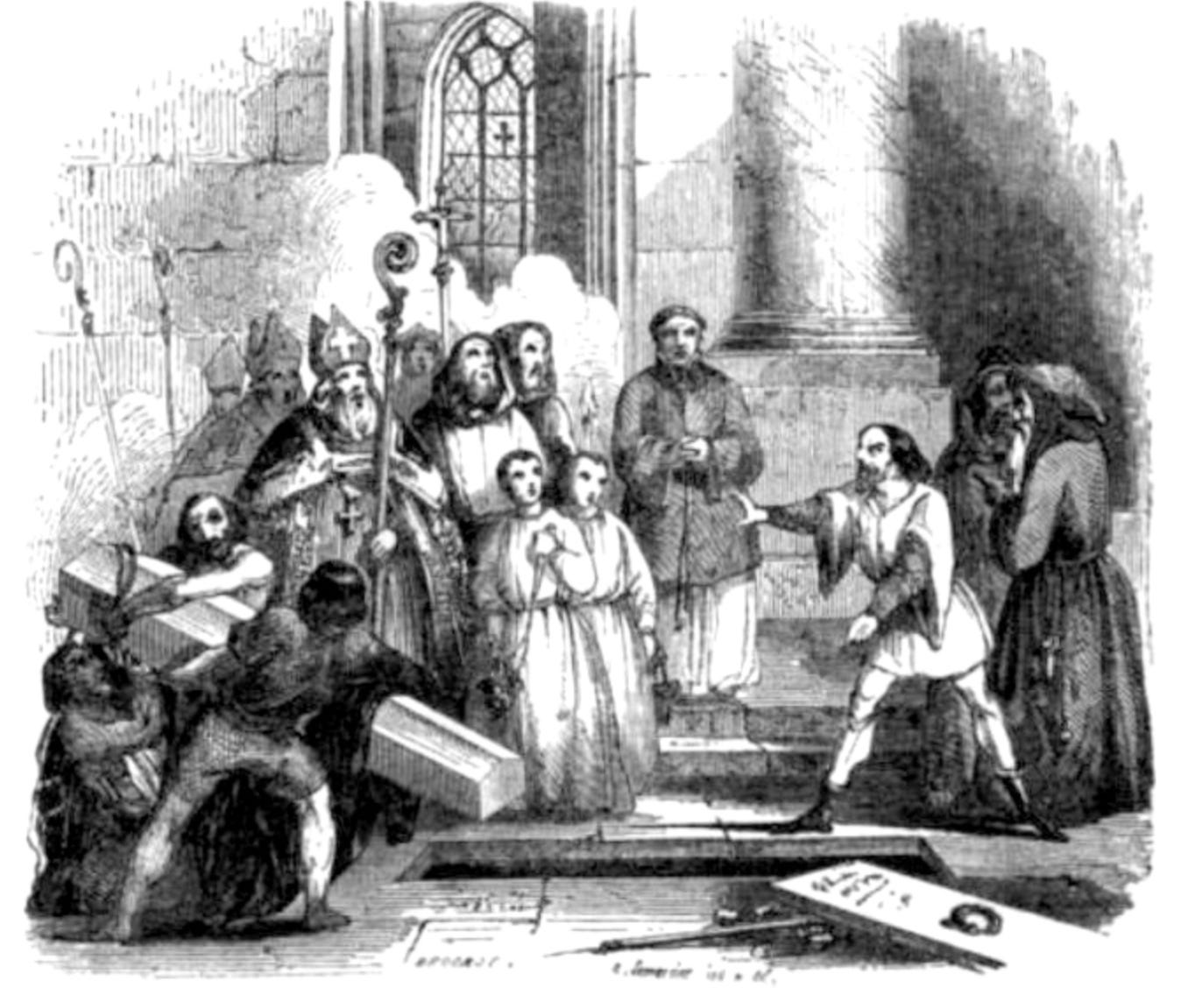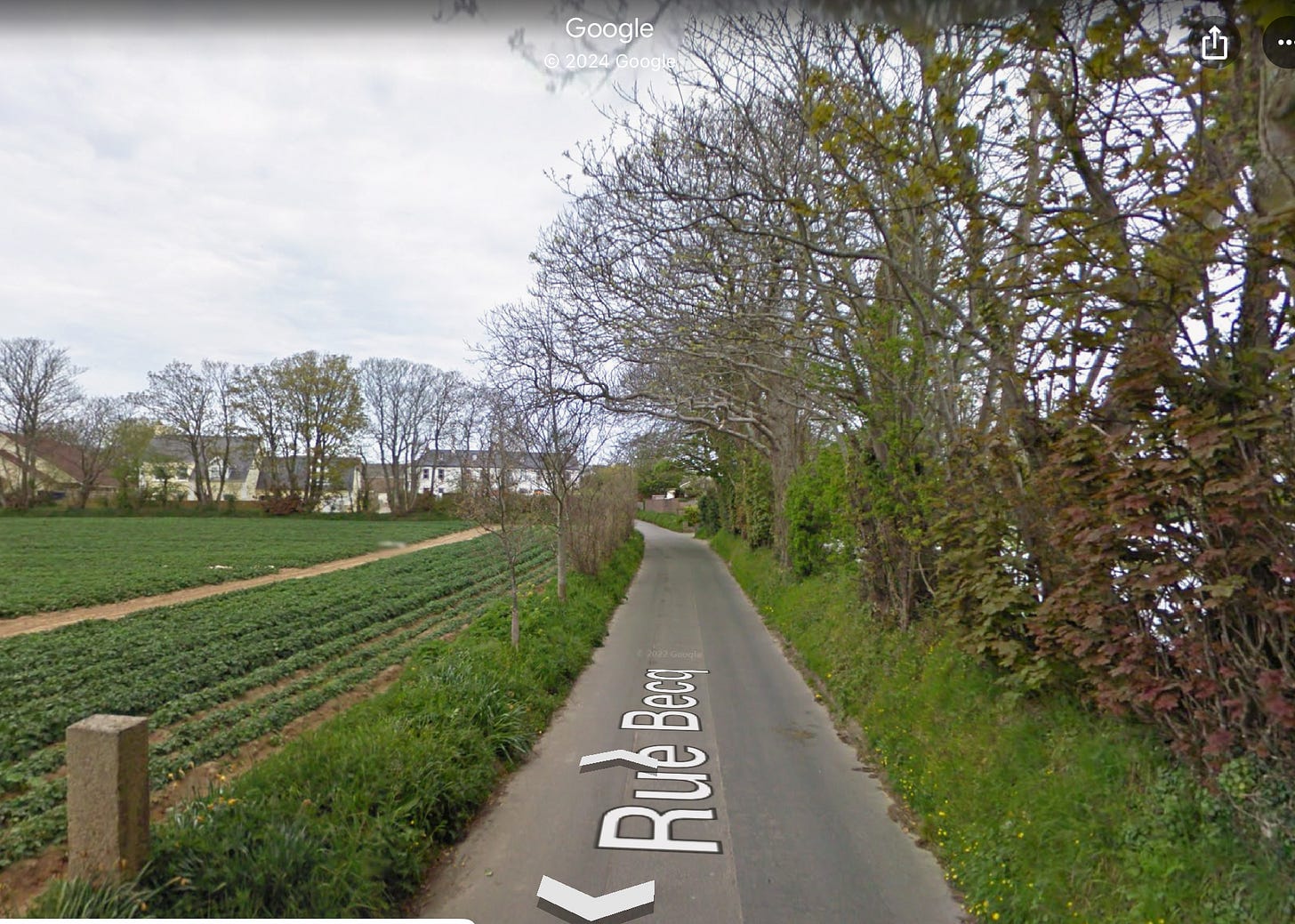The clameur de haro
The survival of an ancient Norman self-help remedy
Generally speaking, as I’ve discussed before, common law allows “self-help” remedies to a limited degree, provided that the exercise of self-help is reasonable. Self-help remedies allow the plaintiff, to some extent at least, take the law into his or her own hands, and remedy the wrong without a court order.
Some years back, I learned of an unusual “self-help” remedy, the clameur de haro, which still operates in the Channel Islands of Jersey, Guernsey and Sark (the Bailiwicks of Jersey and Guernsey are self-governing British Crown Dependencies). The criant (person raising the clameur de haro) speaks certain words in a certain way to the alleged wrongdoer, obliging the wrongdoer to cease what they are doing, and have the matter brought before a judge for adjudication.
The clameur de haro has Norman origins, reflecting the fact that the Channel Islands were once part of the Duchy of Normandy. Purportedly the word haro is derived from the name of the first Duke of Normandy, Rollo (or Raoul). Guyot recounts that Duke Rollo was known for his justice and fairness, and if his subjects were wronged, they would simply call out ha Raoul, which was corrupted to haro. After Duke Rollo’s death, this call for justice was maintained.1

The most famous successful clameur de haro occurred during the funeral of William the Conquerer, King of England and Seventh Duke of Normandy (also known as William the Bastard). William died in Rouen in 1087, perhaps as a result of injuries suffered in battle. He had wanted to be buried in Abbaye-aux-Hommes, the Abbey of St Etienne, which he had built in Caen. Therefore, his body was transported to Caen. However, when the funeral procession reached Caen, a man named Asselin interrupted the funeral with a clameur de haro, claiming that the Abbey had been built in part on his lands, and that he had never been paid for it. A hasty investigation showed Asselin’s allegation to be true, and someone arranged for Asselin to be paid.2
However, the farcical nature of the funeral did not stop there. Apparently the grave for William was too narrow, and when they attempted to force his decomposing corpse into it, the corpse exploded, spreading a foul odour through the church.

The clameur de haro (as well as other species of clameur, including the clameur de révocatoire, which sought to effect rescission of unfair contracts) were still operative laws of Normandy in the late eighteenth century, according to Guyot,3 but the French Revolution of 1788 put an end to seigneurialism in France.
The clameur de haro remains part of the common law of the Channel Islands, and is still used to the current day. There must be an appert péril (immediate or obvious peril) to the criant’s possession in land.4 The criant must kneel, with one hand in the air, in front of two witnesses and the alleged wrongdoer,5 and say the following words:
Haro! Haro! Haro! À l'aide, mon Prince, on me fait tort. [Hear me! Hear me! Hear me! Come to my aid, my Prince, for someone does me wrong.]
After this, the criant must recite the Lord’s Prayer in Norman French, and in Guernsey, must also say Grace in Norman French. The alleged wrongdoer must stop his or her actions until the matter can be brought before a judge (with slightly different procedures on different Islands). The actions must be established as wrong for the clameur de haro to be upheld.6 In this way, the clameur de haro is like a self-help version of an English quia timet injunction,7 where a plaintiff obtains a court injunction to restrain threatened wrongs where there is a ‘real and imminent risk’.8 However, as the Court of Appeal of the Royal Court of Jersey has observed in 2021:
It [the clameur de haro] is particularly unusual as an injunctive process because it requires no affidavit from the person raising it, no undertaking in damages and indeed no justification other than that that person’s rights to possession were being disturbed. There is no order from a Court granting it…9
In the current day, the clameur de haro is only available in relation possessory interests in land on the Islands, and in Jersey, only if the land has been in the possession of the person for a year and a day.10
This was not always the case. Initially, the clameur de haro could be raised for any crime or wrong. Therefore, at first, the clameur de haro was much more like the “hue and cry” of common law, which is described by William Blackstone as follows:
An hue (from huer to shout) and cry, hutesium et clamor, is the old common law process of pursuing, with horn and with voice, all felons, and such as have dangerously wounded another.11
Blackstone goes on to note that the hue and cry is supported by the Statute of Winchester of 1285, (13 Edw. 1. St. 2. c. 4). This statute provided, among other things:
that there was collective responsibility upon the ‘hundreds’ (or administrative regions) to compensate for robberies if offenders were not discovered and apprehended (s 2);
for a night watch to be established in towns (empowered to arrest strangers found roaming the town after sunset) and that a “hue and cry” was to be raised if a stranger found roaming the town did not consent to arrest (s 4); and
that every man between the ages of fifteen and sixty owning certain property was to have certain weapons so that they could join the “hue and cry” to catch felons (s 6).
This was the main Act governing policing in the United Kingdom from 1285 until the enactment of the Metropolitan Police Act 1829 (10 Geo. 4. c. 44). In fact, from at least the 9th century onwards, sheriffs (and later other officers) were entitled by the doctrine of posse comitatus (Latin for “power of the county”) to raise a group of civilians to enforce the law.12 For almost 600 years, English criminal law was therefore practically enforced through a hodgepodge of various local officials: by civilians13 (including the posse comitatus), sheriffs,14 watchmen,15 constables16 and justices of the peace.17
The risks of creating a posse to enforce justice are evident: there is always the possibility that the posse could use their power unjustly. “Self-help” is always perilous. In 1583, the Parlement of Normandy reformed the coutume, ensuring that that the clameur de haro could only be used for civil wrongs, not criminal wrongs. The restriction of the clameur de haro to possessory interests in land was only introduced to the Channel Islands in the 17th century.18 This research showed me that both English common law and Norman law both sought to restrict self-help, and to prevent people from using the law unreasonably.
Moreover, as with the provision of an interlocutory injunction, there are questions even in the current day about who should bear the costs if the clameur de haro has been improperly raised. In 2023, Ms De Gruchy sought to restrain the Parish of Trinity, or the Connétable of the Parish of Trinity in Jersey from carrying out works to cut back branches from a parish road, Rue Becq. It was found that she had not been entitled to raise the clameur de haro and she was fined £1000.

Meanwhile, legal costs to the parish were estimated to amount to £70,000. The Parish of Trinity then sought indemnity costs against Ms Gruchy, but this year, it was decided that she only had to pay the Parish’s costs on a normal party-party basis.19 The court noted at [38]:
The Clameur de Haro has none of the safeguards of more usual modern injunction procedure. Accordingly, it must be employed with circumspection. There are other remedies available to vindicate title/ownership and indeed to create an ex parte holding position by application to the Court in the usual way.
The message is clear: where possible, use procedures which allow the defendant’s interests to be safeguarded in the event that the plaintiff is not entitled to relief.
Joseph-Nicolas Guyot, Répertoire universel et raisonné de jurisprudence civile, criminelle, canonique et bénéficiale: ouvrage les plusieurs jurisconsultes, Vol 3 (Paris: Vissé, 1784–1785) pg 538.
Ibid.
Ibid, pgs 533 - 541.
The word “appert” no longer exists in Modern French—it is evidently a remnant of Norman French—but has been translated to mean visible, évident ou manifeste (visible, evident or manifest): see Sir Peter Crill, Clameur de Haro (1991) 6 Denning LJ 33, 34. See, for a case where appert péril was not made out in the Jersey courts: AG and Baillhache v. Williams 1968 JJ 991.
Cf In the representation of D.J. Sheppard re Clameur de Haro [2021] JCA 088; Representation of Sarre re Clameur de Haro (2000/61) (Jersey).
Quia timet means ‘because he is afraid’ in Latin. It was said in a recent English case that the plain English term ‘precautionary injunction’ should be preferred: High Speed Two (HS2) Ltd v Four Categories of Persons Unknown [2022] EWHC 2360 (KB), [99].
Ineos Upstream Ltd v Persons Unknown [2019] EWCA Civ 515, [2019] 4 WLR 100, [34](1) (Longmore LJ speaking for the court).
In the representation of D.J. Sheppard re Clameur de Haro [2021] JCA 088, [4], an appeal from Representation of Sheppard re Powell [2021] JRC 061.
AG v de Carteret 1987–88 JLR 626; AG v Flint 2000 JLR N–52.
William Blackstone, Commentaries on the Laws of England Book IV, W. Priest (general ed), R. Paley (Book IV ed) (Oxford: Oxford University Press, 2016) pg 191.
David B. Kopel, ‘The Posse Comitatus And The Office Of Sheriff: Armed Citizens Summoned To The Aid Of Law Enforcement’ (2015) 104 Journal of Criminal Law and Criminology 761, 769-774.
All freemen were enjoined to bear arms in the service of the King first by the Assize of Arms of 1181.
Historically sheriffs were supposed to apply the law in their counties, and date back to Anglo-Saxon times. Indeed, the word ‘sheriff’ comes from ‘shire reeve’ (in Old English scīrgerefa).
Watchmen were first established by an Ordinance of 1233, but reinforced by the Statute of Winchester.
Constables were established by an Ordinance of 1252, which provided for the appointment of constables to summon men to arms, quell breaches of the peace, and to deliver offenders to the sheriff.
Sir John Baker, An Introduction to English Legal History (4th edn, 2019, Oxford University Press) pgs 28–29, notes the Justice of the Peace were formed in the rule of Edward III (1327–1377) and had a partly judicial, partly peace-keeping and partly administrative role. Importantly, Justices of the Peace held office under commissions, which could be revoked by the King.
Crill, above n 4, 33.
In the matter of the Representation of Nicola Roselle De Gruchy and the Parish of Trinity and in the matter of a Clameur de haro [2024] JRC 082.


Thanks very much. Incidentally, I am looking into Ridge v Baldwin at the moment, and needed some background about policing. I had only guessed at what you have told us concerning the old laws. Ridge was deep-sixed by the “watch committee“ of Brighton, which by then seemed to be a committee of the local authority.
Coincidentally shortly after reading this and, as a result, learning the derivation of "Haro", someone pointed me to a GK Chesterton article wherein he writes:
If a man has burnt my house to a heap of ashes, I am none the less justly indignant with him for having burnt everything, because I cannot at first even remember everything he has burnt. [...]. In a simpler society, I should rush out of the ruins, calling for help on the Commune or the King, and crying out, “Haro! a robber has burnt my house.” I might, of course, rush down the street crying in one passionate breath, “Haro! a robber has burnt my front door of seasoned oak with the usual fittings, fourteen window frames, nine curtains, five and a half carpets, 753 books, of which four were , one portrait of my great-grandmother,” and so on through all the items; but something would be lost of the fierce and simple feudal cry.